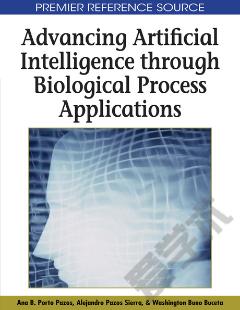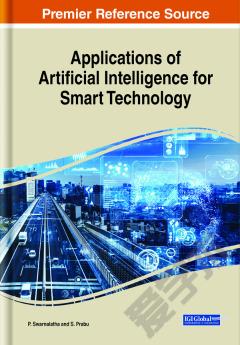Intelligent Bioinformatics —— The Application of Artificial Intelligence Techniques to Bioinformatics Problems
----- 智能生物信息学:人工
Preface. Acknowledgements. PART 1: INTRODUCTION. 1. Introduction to the Basics of Molecular Biology. 1.1 Basic cell architecture. 1.2 The structure, content and scale of deoxyribonucleic acid (DNA). 1.3 History of the human genome. 1.4 Genes and proteins. 1.5 Current knowledge and the 'central dogma'. 1.6 Why proteins are important. 1.7 Gene and cell regulation. 1.8 When cell regulation goes wrong. 1.9 So, what is bioinformatics? 1.10 Summary of chapter. 1.11 Further reading. 2. Introduction to Problems and Challenges in Bioinformatics. 2.1 Introduction. 2.2 Genome. 2.3 Transcriptome. 2.4 Proteome. 2.5 Interference technology, viruses and the immune system. 2.6 Summary of chapter. 2.7 Further reading. 3. Introduction to Artificial Intelligence and Computer Science. 3.1 Introduction to search. 3.2 Search algorithms. 3.3 Heuristic search methods. 3.4 Optimal search strategies. 3.5 Problems with search techniques. 3.6 Complexity of search. 3.7 Use of graphs in bioinformatics. 3.8 Grammars, languages and automata. 3.9 Classes of problems. 3.10 Summary of chapter. 3.11 Further reading. PART 2: CURRENT TECHNIQUES. 4. Probabilistic Approaches. 4.1 Introduction to probability. 4.2 Bayes' Theorem. 4.3 Bayesian networks. 4.4 Markov networks. 4.5 References. 5. Nearest Neighbour and Clustering Approaches. 5.1 Introduction. 5.2 Nearest neighbour method. 5.3 Nearest neighbour approach for secondary structure protein folding prediction. 5.4 Clustering. 5.5 Advanced clustering techniques. 5.6 Application guidelines. 5.7 Summary of chapter. 5.8 References. 6. Identification (Decision) Trees. 6.1 Method. 6.2 Gain criterion. 6.3 Over fitting and pruning. 6.4 Application guidelines. 6.5 Bioinformatics applications. 6.6 Background. 6.7 Summary of chapter. 6.8 References. 7. Neural Networks. 7.1 Method. 7.2 Application guidelines. 7.3 Bioinformatics applications. 7.4 Background. 7.5 Summary of chapter. 7.6 References. 8. Genetic Algorithms. 8.1 Single-objective genetic algorithms - method. 8.2 Single-objective genetic algorithms - example. 8.3 Multi-objective genetic algorithms - method. 8.4 Application guidelines. 8.5 Genetic algorithms - bioinformatics applications. 8.6 Summary of chapter. 8.7 References and Further Reading. PART 3: FUTURE TECHNIQUES 9. Genetic Programming. 9.1 Method. 9.2 Application guidelines. 9.3 Bioinformatics applications. 9.4 Background. 9.5 Summary of chapter. 9.6 References. 10. Cellular Automata. 10.1 Method. 10.2 Application guidelines. 10.3 Bioinformatics applications. 10.4 Background. 10.5 Summary of chapter. 10.6 References and Further Reading. 11. Hybrid Methods. 11.1 Method. 11.2 Neural-genetic algorithm for analyzing gene expression data. 11.3 Genetic algorithm and k nearest neighbour hybrid for biochemistry solvation. 11.4 Genetic programming neural networks for determining gene-gene interactions in epidemiology. 11.5 Application guidelines. 11.6 Conclusions. 11.7 Summary of chapter. References and Further Reading. Index.
{{comment.content}}








 京公网安备 11010802027623号
京公网安备 11010802027623号